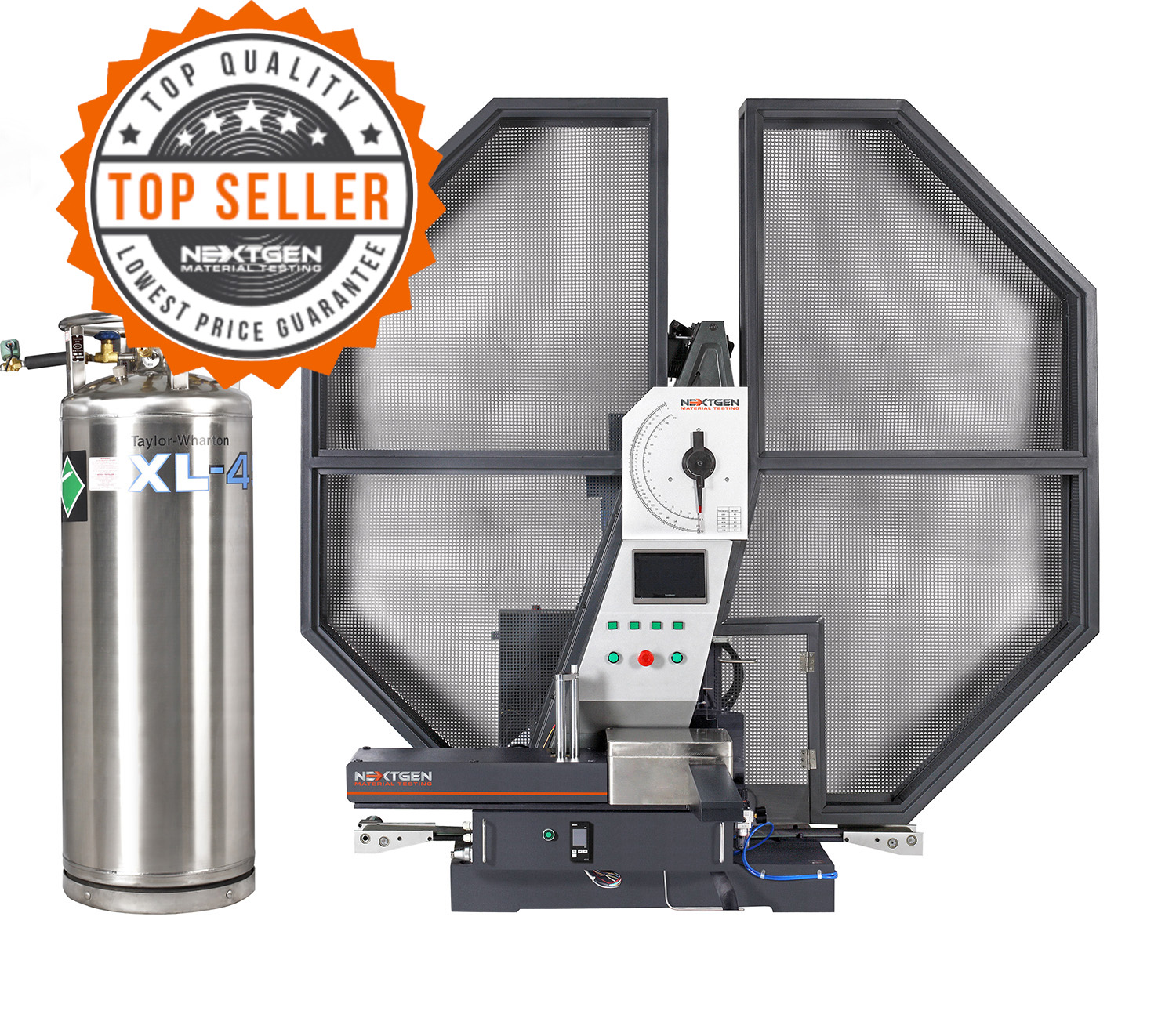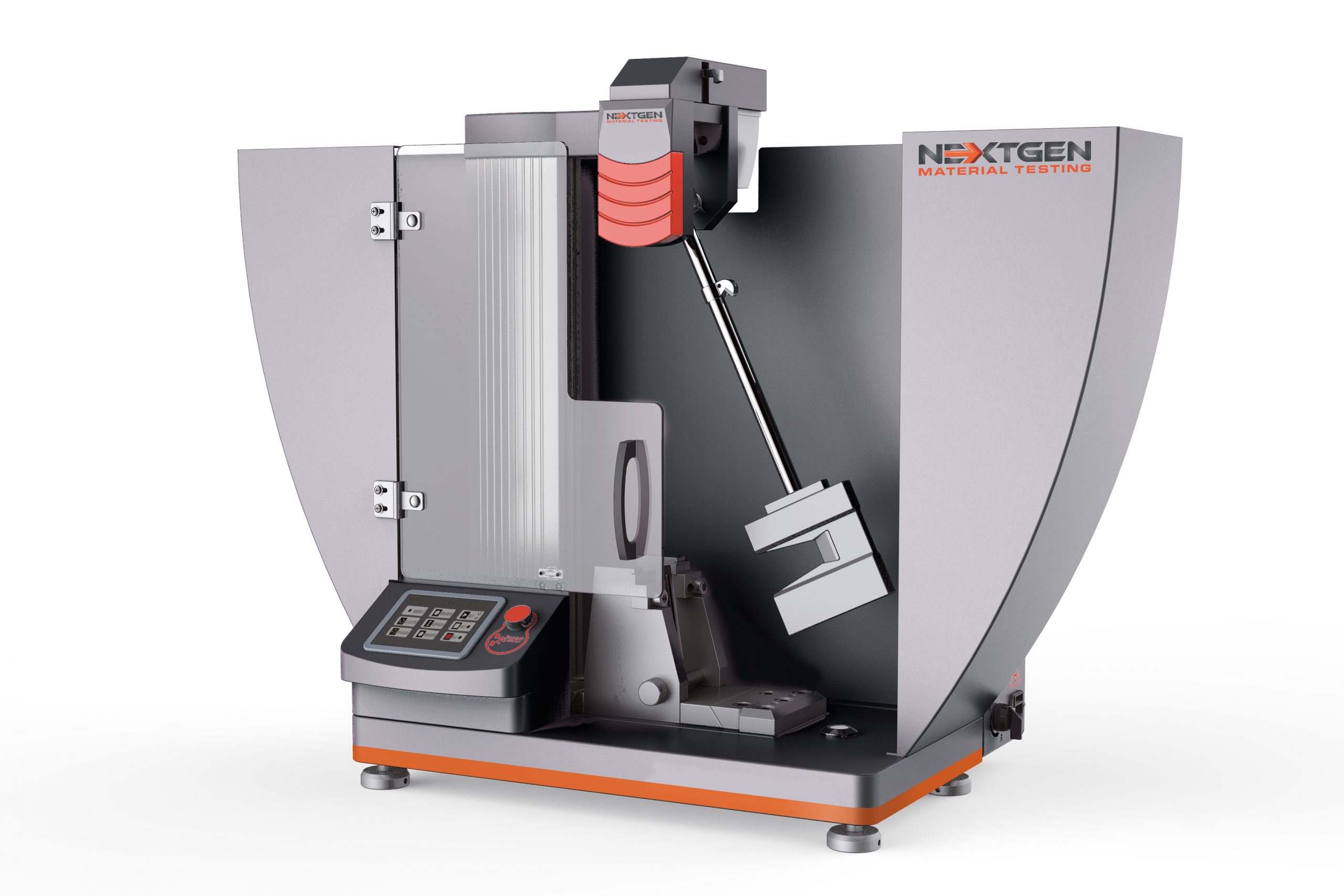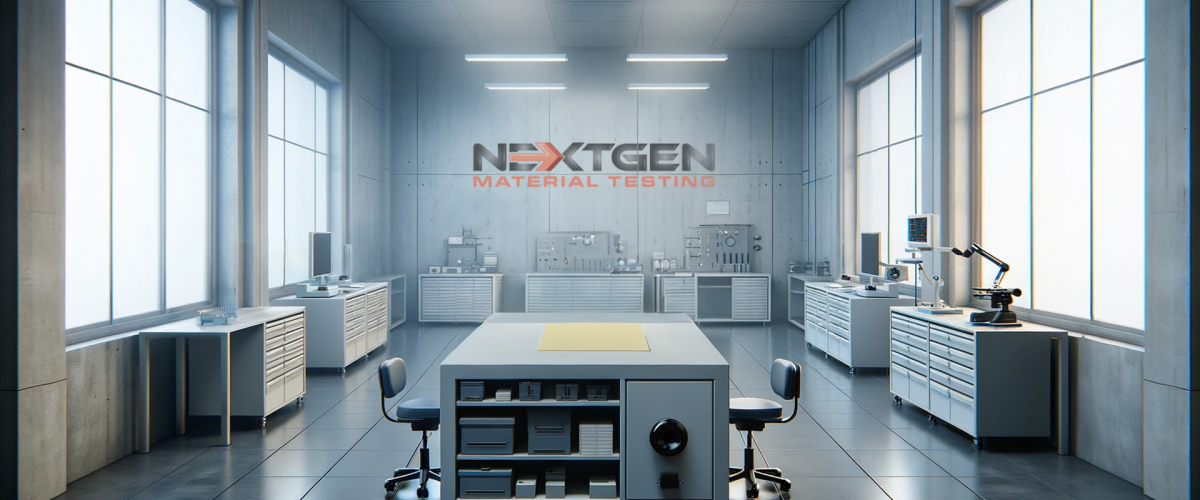What is Impact Testing?
Impact testing is a procedure that measures a material’s resistance to failure when subjected to high-rate loading. This method is used in multiple industries like automotive, aerospace, and construction to guarantee materials withstand real-world impacts.
There are different testing procedures, such as Charpy and Izod tests, adapted to different material types and applications. These tests necessitate precise specimen configurations to accurately gauge the material’s impact behavior. From metals to plastics, the specific testing approach and specimen requirements are determined by the material characteristics and intended application.
The purpose of this article is to provide an overview of the basics of impact testing. Our discussion will cover the different types of impact testing, the necessary equipment, and the valuable data these tests provide.
Impact Testing – Charpy and Izod Tests
The impact testing method is pivotal for determining a material’s ductile-to-brittle transition temperature and its ability to resist deformation due to impact loads. These characteristics are vital for selecting materials that meet specific application requirements, resulting in safer and more effective products for end-users. The Charpy and Izod tests, for example, quantify the energy absorbed by a material upon impact, while drop-weight and dynamic tear tests provide additional data on material resistance to impacts of varying intensities.
Despite not being universally required, impact testing is an integral part of quality control in many industries where material failure can lead to significant safety risks. It helps manufacturers meet quality specifications, particularly for parts requiring a certain toughness level, like ship hull components or pressure vessels. Standards such as ISO 8256 and ASTM D3763 guide these testing procedures, making sure products comply with industry and internal quality and safety standards for impact strength.
Impact tests often go hand-in-hand with other testing methods to provide a comprehensive understanding of material behavior. For instance, following an impact test, secondary inspection methods like ultrasound or microwave testing might be necessary to investigate barely visible or internal damages. The choice between non-destructive and destructive post-impact testing techniques depends on the specific information needed the remaining strength and properties of a material.
The standard specimens used in these tests typically include notches (V-shaped for Charpy and Izod tests) to focus the impact and facilitate crack initiation. Materials commonly subjected to impact testing span many materials, including metals, plastics, composites, and ceramics.
Advanced Specimen Notching and Broaching Machine
 Preparing specimens accurately is pivotal for impact testing, as the shape and quality of the notch greatly influence the test results. Our GenNotch 4000 Series, a specimen notching/broaching machine, serves this purpose by guaranteeing that specimens for Charpy and Izod tests are notched with precision and consistency. This machine has a dual chamber design, allowing two specimens to be prepared simultaneously, simplifying the preparation process without sacrificing accuracy.
Preparing specimens accurately is pivotal for impact testing, as the shape and quality of the notch greatly influence the test results. Our GenNotch 4000 Series, a specimen notching/broaching machine, serves this purpose by guaranteeing that specimens for Charpy and Izod tests are notched with precision and consistency. This machine has a dual chamber design, allowing two specimens to be prepared simultaneously, simplifying the preparation process without sacrificing accuracy.
With a focus on user-friendliness, the GenNotch 4000 incorporates an interface that simplifies its operation, making it accessible to users of varying skill levels. This is particularly beneficial in high-throughput environments where efficiency and ease of use are paramount.
The machine’s capability to produce notches comparable to those made by milling machines testifies to its precision. This makes sure that each specimen is prepared with a high degree of repeatability, a critical factor in reliable impact test results.
Furthermore, the GenNotch 4000’s versatility is enhanced by the availability of broaching knives for both V and U-type notches. The machine’s knives handle specimens up to 60 HRC, accommodating a wide variety of materials.
Charpy Impact Test
In a Charpy test, a notched specimen is struck by a pendulum hammer swinging from a known height. The energy absorbed by the specimen during fracture is calculated by the difference in the pendulum’s height before and after impact. This energy absorption measures material toughness. The notch on the specimen is critical as it localizes the stress, making the crack initiate at a predictable point. The standard specimen dimensions and the testing procedures are specified in ASTM E23, ISO 148-1, and previously EN 10045-1 (now replaced by ISO 148-1).
The Charpy test can reveal material’s ductile-brittle transition temperature (DBTT), where the required energy to fracture the material changes significantly, indicating a transition from ductile to brittle behavior. However, determining an exact DBTT can be complex, as it often represents a range rather than a precise temperature. Several factors influence the results of a Charpy test, including the material’s yield strength, ductility, and the characteristics of the notch (depth and shape), as well as the testing temperature and the strain rate during impact.
Recent advancements, spearheaded by institutions like NIST, have focused on refining the Charpy test for even increased precision. Enhancements include the development of instrumented strikers, which are equipped with strain gauges to provide more detailed data on force exertion during impact. This innovation allows for a more accurate assessment of a material’s resistance to impact and ductile versus brittle fracture behavior. Despite these advancements, there’s ongoing work to standardize instrumented striker design and calibration.
Best Equipment for Izod and Charpy Impact Testing
An exemplary tool that stands out for its capability to handle these types of tests is the Class J Impact Testing System. Our system showcases a blend of advanced features and design, making it a top choice for conducting Izod and Charpy impact tests on plastics and rubber specimens. With its versatile configuration, it efficiently addresses Charpy tests from 1J to 50J and Izod tests from 1J to 22J.
The machine is distinguished by its high-resolution capabilities, thanks to a shaftless encoder that allows for an angle resolution of 0.045°. This feature provides precise measurements and significantly reduces energy losses, as the encoder operates without friction. Moreover, the touchscreen display enhances the user experience by facilitating easy setup of specimen dimensions, pendulum energy, and calibration data. It also displays test results like absorbed energy and impact toughness.
One of the system’s standout features is its interchangeable pendulum. This enables the machine to perform a range of tests including Charpy, Izod, and tensile impact tests. This adaptability makes it a cost-effective solution for laboratories looking to conduct multiple types of impact tests without multiple machines.
The design of the Class J Impact Testing System prioritizes ease of use and accuracy. Its rotating design aids in quick and accurate center alignment of specimens for Charpy tests. Additionally, the supports and anvils are designed for stability and easy adjustment, requiring only the removal of two bolts to change the supports. With a single-column structure, not only does the test space expand, but it also makes future low-temperature impact test accessories straightforward to install.
Difference Between Izod and Charpy Impact Tests
In general, the main difference between the Izod test and the Charpy test can be attributed to the positioning of the specimen during the impact test and the location of the impact. Nevertheless, lets break down the differences between Izod and Charpy impact tests:
-
Specimen Positioning: In the Izod test, the specimen is positioned vertically and acts as a cantilever, supported at one end. In contrast, the Charpy test involves the specimen being placed horizontally across two supports, creating a simply-supported beam with the impact applied at the center.
-
Impact Location: The notch orientation also differs between the two tests. In the Izod test, the pendulum strikes the specimen on the same side as the notch. In the Charpy test, the pendulum strikes the specimen on the opposite side of the notch. This difference in impact location affects the stress concentration at the notch and the resultant fracture mechanics.
-
Standards and Applications: Both tests are governed by specific standards, with ASTM D256 for plastics and ASTM E23 for metals common for Izod, and ASTM E23, ISO 148-1, or EN 10045-1 (retired) for Charpy. While both tests aim to measure material resistance to impact, their different setups make them suitable for different material types and testing conditions. The Charpy test is noted for its use in assessing metal ductile-brittle transition temperatures.
-
Specimen Dimensions: There are also slight variations in the standard specimen dimensions and notch types used in each test, which can influence the results due to differences in stress concentration and the volume of material under stress.
Summarizing Impact Testing Insights
Many industries rely on impact testing to determine whether a material can withstand sudden stress. Methods such as the Charpy and Izod tests, specific to different materials and their specific applications, are essential for accurately determining a material’s behavior under impact. This knowledge helps select appropriate materials for specific needs, improving product safety and effectiveness.
Accurate material testing, especially impact testing, relies heavily on sophisticated and precise tools. Machines like the GenNotch 4000 Series and the Class J Impact Testing System exemplify the advanced technology available for preparing specimens and conducting comprehensive Izod and Charpy tests. Their capabilities provide high precision, efficiency, and adaptability to different testing requirements.
For more insights into impact testing, specimen preparation, or any queries related to material testing, NextGen welcomes direct inquiries or quote requests. Our expertise and range of testing solutions are designed to meet comprehensive testing needs, guaranteeing clients receive the most efficient support and guidance for all material testing requirements.
